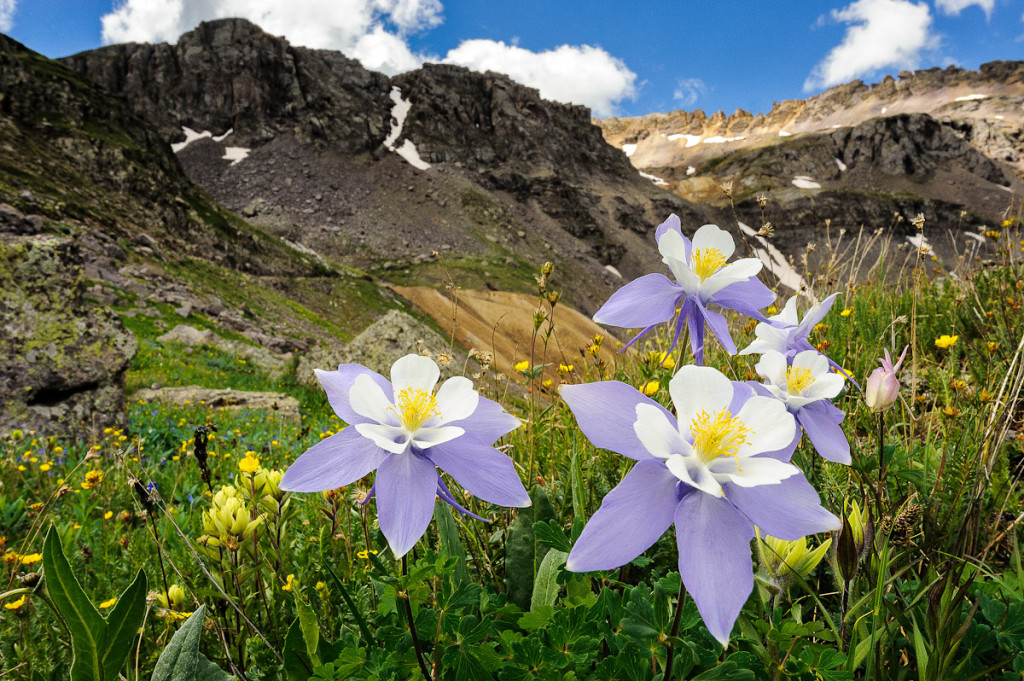I saw my first Rocky Mountain Columbine in bloom the other day and our neighborhood, and it reminded me of how lovely this wildflower is. As we approach 4th of July, I’m reminded that is is not only the birthday of our country, but also of the state of Colorado, and its state flower. I’ve always thought it unfortunate that the word Columbine connotes such tragic memories for most, because of the Columbine High School massacre. But in fact, the high school got its name from our wonderful wildflowers that bloom in the high country around this time.
What makes the Columbine one of my favorites? It has the most exquisite structure and coloration to it. With the purple blue on the outside, which are actually sepals (like leaves) rather than petals, and the delicate white petals on the inside, nodding on a slim, reedy branch. Columbines actually prefer shady, wet areas, so you only usually find them in forested or riparian areas near creeks and rivers. There are some alpine lakes that provide the ideal habitat for columbine. Bryon backpacked last year near Chasm Lake in Rocky Mountain National Park and came upon an entire hillside of Columbine in bloom. I’ve been told that another fabulous spot for Columbine is the aptly named Columbine Lake out of the Winter Park area, which would be a worthy destination.
Columbine was first discovered on one of Colorado’s highest peaks, Pikes Peak, in 1820, and is beloved not only by people, but also by hummingbirds and bees. While there are over 70 species of Columbine that bloom in the world, it is the lavender type that populates the high country in Colorado. Because it is so prized, the Colorado Assembly enacted a law in 1925 that makes it illegal to pull up a plant on public lands, and limits the blooms and seeds that may be collected. But many garden stores sell the seeds of the Colorado Columbine as part of a native wildflower mix, so if you can find the right spot, you can grow your own Columbine.
We’re planning one of our first summer alpine hikes tomorrow, and I’m hoping we get to see many Columbines along the way. One of my favorite things I’v’e heard about Columbine is an interpretation of its colors as it relates to Colorado:
Blue is a symbol of the sky, white represents snow, and yellow symbolizes Colorado’s gold mining history.


